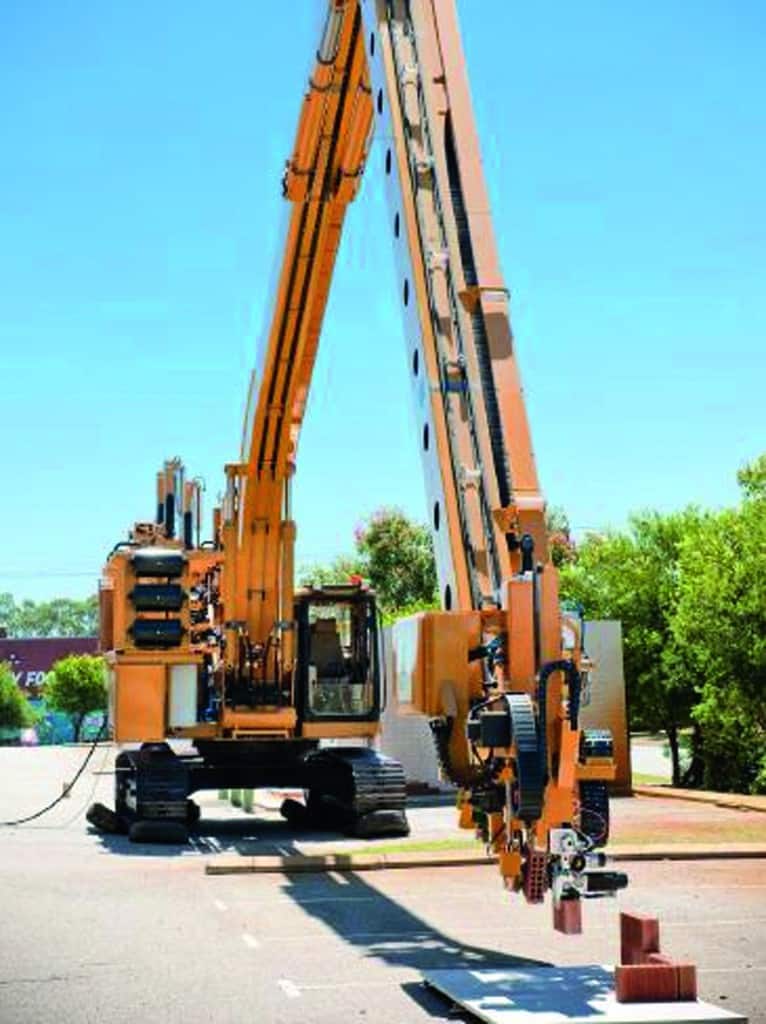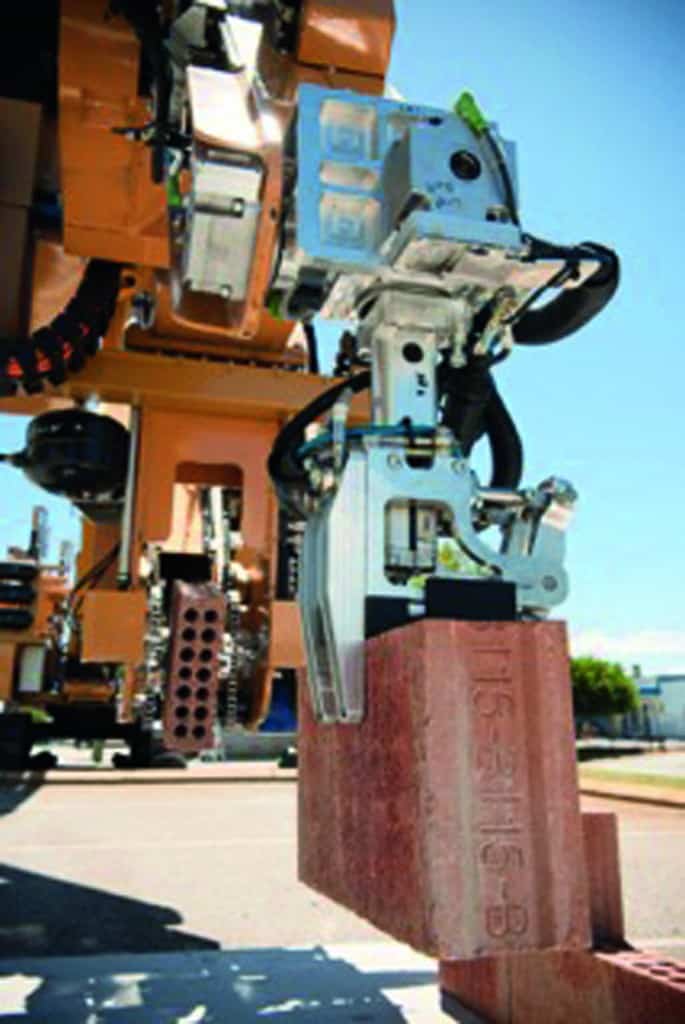Constructing change
As technology moves forward in leaps and bounds, an innovative robot promises to change the way we build our homes. Jacob Harris chats to Fastbrick Robotics CEO Mike Pivac to find out how.
In 1839 William Otis received a US patent for the steam shovel: a machine built for excavating and moving earth. With the capacity to remove 380 m3 per day the steam shovel dramatically increased the speed in which excavations could be made and allowed for developments, such as the Panama Canal, that would have previously been impossible.
Today, the construction industry continues to be a hotbed of innovation – as we constantly look for faster, more efficient and less labour-intensive ways to build – but it is only every now and again that a new technology is invented with the capacity to truly redefine the industry. Enter ‘Hadrian 105’ by Fastbrick Robotics; a brick laying robot that can lay 1000 standard brick equivalents (SBE) an hour and complete a house structure, end to end, in just two days.
“The project was born in about 2006,” says Fastbrick Robotics’ CEO Mike Pivac.
“It was first created as a navigation technology by my cousin Mark Pivac. He designed a method to compensate for dynamic interferences and movement over distances in real time by combining multiple layers of navigation – namely GPS, Inertial Navigation Systems (INS) and Laser.
“Once he’d worked out how to do it he knew he had something really interesting on his hands but didn’t quite know its best application. It wasn’t until some while later that he got the idea to apply it to a machine that would build a house the same way a 3D printer would build something,” says Mike.

While Hadrian is certainly a disruptive technology that is poised to revolutionise the industry, Mike stresses that this is not about putting brickies out of work. Instead, the company’s aim is to have the machine work alongside bricklayers, taking care of the fast, heavy work and leaving the more intricate aspects to be undertaken by skilled tradespeople.
“We’re focused on integrating the two side-by-side as we move ahead. Bricklayers are becoming thinner on the ground and the average age is increasing steadily. We see this technology as a way to reinvigorate the trade and encourage more young people to take it up. Quite frankly the best use of skilled bricklayers is to have a machine doing the time consuming, laborious, repetitious work, letting the brickies focus on the artisanal side of things,” says Mike.
“Hadrian is something that’s going to improve people’s lives and workplaces and allow us to do things much more safely. At the moment there’s not many brickies working until they’re 70, the work’s just too strenuous, but the expectation these days is that we’ll work until we’re that age. Most bricklayers need to find something else they can do by the time they’re 50 years old. Imagine if they were just doing artisan work and there was a machine working on the same site doing all the heavy work, all the big repetitious long wall sections – no more planks, drums, mixers and shovels.”
Thanks to the navigational technology it’s built around, the machine is ‘aware’ of its position in space. This enables it to compensate for movement in real time and deliver a precision finish with improved structural strength and accuracy to 0.5mm.
“Robots traditionally have always worked within factories where they’re bolted to the floor. They do things very well and very fast but if you move one an inch it can’t relocate itself and continue to work. The Hadrian machine will demonstrate that robots actually can work outside of controlled environments, provided they know exactly where they are in space at every moment in time. That’s the interesting part of the navigation technologies: the machine is able to understand where it is in the 3D space, anywhere on the globe. An analogy I use is if you put the machine on a barge or a boat it would lay a perfectly level home on the shore regardless of what the waves are doing to the boat,” says Mike.
This ability also means that the potential for other applications of this technology are bounded only by one’s imagination. Mike foresees future evolutions of the machine hanging from boom cranes doing high-rise infill work, eliminating the need for timber form work.

Interest in Hadrian has understandably been overwhelming with commercial interest expressed from over 40 countries. In response to this, Fastbrick Robotics plans to release a commercial machine onto the market late next year and has recently become a public listed company.
The invention of the steam shovel facilitated the railroad boom (among other things) of the late 19th and early 20th century. And as we stand faced with housing affordability crises in many parts of the world, a technology that promises to reduce the fundamental cost and timeframe of construction is something we can all be excited about.
